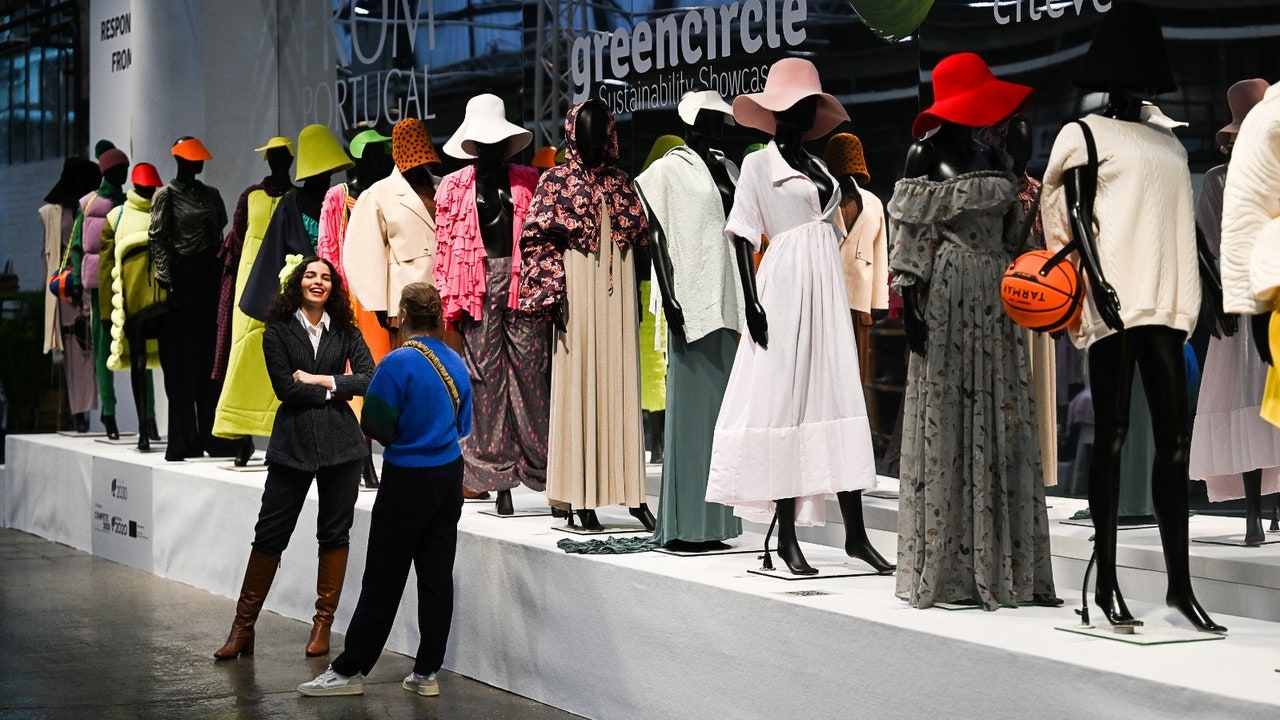[ad_1]
Neonyt-2023-Recap: We took these 3 impulses with us from Düsseldorf, and we definitely have to work on this important point
The opened over three days neonyte in cooperation with the international trade fair for premium fashion “FASHN ROOMS – See & Order” in Dusseldorf its gates for industry insiders. The sustainability platform licensed by Messe Frankfurt was launched in 2023 by the Igedo Exhibition in Boehler site in Dusseldorf aligned. Between exciting panel talks on the Fashionsustain stage and experiencing sustainable labels in the Prepeek showroom, which also hosted talks for creators and journalists, there were a variety of ways to find out what alternatives there are to the topic of fast fashion gives. In order to share these impressions with you, we have collected three things for you that we took with us from our visit to Düsseldorf. They can help anyone who is interested to think about the topic of sustainable consumption in their own everyday lives – including an important lesson that everyone should definitely take into account in order to make the (sustainable) fashion industry even more accessible and diverse.
Fashion and sustainability: We took these 3 impulses with us from Neonyt 2023
1. Sustainable fashion is multidimensional!
160 trillion pieces of clothing are produced every year, as we learned last year from the sustainability consultant Lisa Wagner, who advises companies such as the Oeko-Tex seal of approval, among other things. 80 percent of it ends up in the garbage afterwards. A problem that is generated in many places and cannot be solved in just one way. Sustainability is an unbelievably multidimensional and complex topic. In plain language, this means that actors are often faced with double-edged decisions that are often not easy to explain or implement. In short, the abstract nature and complex intricacies of the subject make it difficult to grasp. It starts with the designation and classification alone. Vegan, fair and sustainable, for example, are not synonymous with each other, but a different focus that ultimately contributes to the same goal. But in order to achieve this, different levels and parameters have to be considered. In terms of manufacturing, product lifecycle, upcycling, supply chain, ethical practices, but also diversity. And if there are enough changes and conversions in all areas, there is the possibility of creating a holistic, i.e. holistic economy that has a positive impact for everyone involved – planet and people.
Instagram content
This content can also be viewed on the site it originates from.
2. Change only works through cooperation!
More and more people want to consume responsibly. But often they don’t know where to start. It is therefore important to work collaboratively – in communication, but also on the manufacturer side. Many of the entrepreneurs face similar problems when sourcing products, for example. Through accumulated knowledge, sharing and best practice examples, one can learn from each other and accelerate the development of sustainable alternatives and practices. This is precisely why it is so important that trade fairs and formats such as Neonyt, in addition to the exhibition rooms, also organize formats that help to broaden one’s own horizon and form new alliances with one another. On site, content creators, designers, manufacturers and many more will have the opportunity to contact each other directly, ask questions and express any concerns and wishes. An important step in breaking down the barriers and making the slow fashion movement the new norm. Because it is not without reason that Neonyt calls itself a community platform for sustainability. This collaborative approach should also be lived and emphasized outside of the events. Because in order to create real progress in terms of a sustainable fashion industry, it takes more than just a few pioneers – it takes a whole network.
3. Recognize your own (action) power in everyday life!
The topic of sustainability is often passed on to consumers, who are simultaneously suggested with sophisticated campaigns that they can make decisions. On the one hand, that’s true, but as an end consumer, you only choose from a curated range in which brands make a specific profile and, among other things, use greenwashing to credibly assure you that they want to change something. Which is not always 100% true, apart from transparent communication. But the media, influencers and other gatekeepers certainly have the opportunity to provide an alternative selection and thereby make certain products and labels visible. Something that can help guide purchasing decisions more towards responsible consumption. But even on a small scale, each individual can contribute to acting in a resource-saving manner. This starts with washing, continues with the right care and extends to wearing the clothes for a long time (at least three times before it goes into the wash). Renting clothes and second-hand shopping are also good options. Admittedly, that sounds very trivial at first and not much like “saving the world”, but the most sustainable thing anyone can do is to become aware of what their own contribution means for the economy.
[ad_2]
